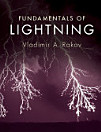Electromagnetic Computation Methods for Lightning Surge Protection Studies
About this ebook
This book is the first to consolidate current research and to examine the theories of electromagnetic computation methods in relation to lightning surge protection. The authors introduce and compare existing electromagnetic computation methods such as the method of moments (MOM), the partial element equivalent circuit (PEEC), the finite element method (FEM), the transmission-line modeling (TLM) method, and the finite-difference time-domain (FDTD) method. The application of FDTD method to lightning protection studies is a topic that has matured through many practical applications in the past decade, and the authors explain the derivation of Maxwell’s equations required by the FDTD, and modeling of various electrical components needed in computing lightning electromagnetic fields and surges with the FDTD method. The book describes the application of FDTD method to current and emerging problems of lightning surge protection of continuously more complex installations, particularly in critical infrastructures of energy and information, such as overhead power lines, air-insulated sub-stations, wind turbine generator towers and telecommunication towers.
- Both authors are internationally recognized experts in the area of lightning study and this is the first book to present current research in lightning surge protection
- Examines in detail why lightning surges occur and what can be done to protect against them
- Includes theories of electromagnetic computation methods and many examples of their application
- Accompanied by a sample printed program based on the finite-difference time-domain (FDTD) method written in C++ program
About the author
Professor Yoshihiro Baba, Associate Professor, Department of Electrical Engineering, Doshisha University, Kyoto, Japan
Professor Baba received his PhD from the University of Tokyo. He was Visiting Scholar at the Lightning Laboratory at the University of Florida, USA, and is currently Editor of the IEEE Transactions on Power Delivery. His areas of interest include computational electromagnetics, electromagnetic compatibility and lightning protection.
Professor Vladimir A. Rakov, Department of Electrical and Computer Engineering, University of Florida, USA
Professor Rakov studied for his PhD at Tomsk University in Russia and has written extensively on the subject of lightning in numerous international journals and conference proceedings. He is A Fellow of the IEEE and a Fellow of the American Meteorological Society, amongst others, and his areas of interest cover lightning, lightning protection and atmospheric electricity.






